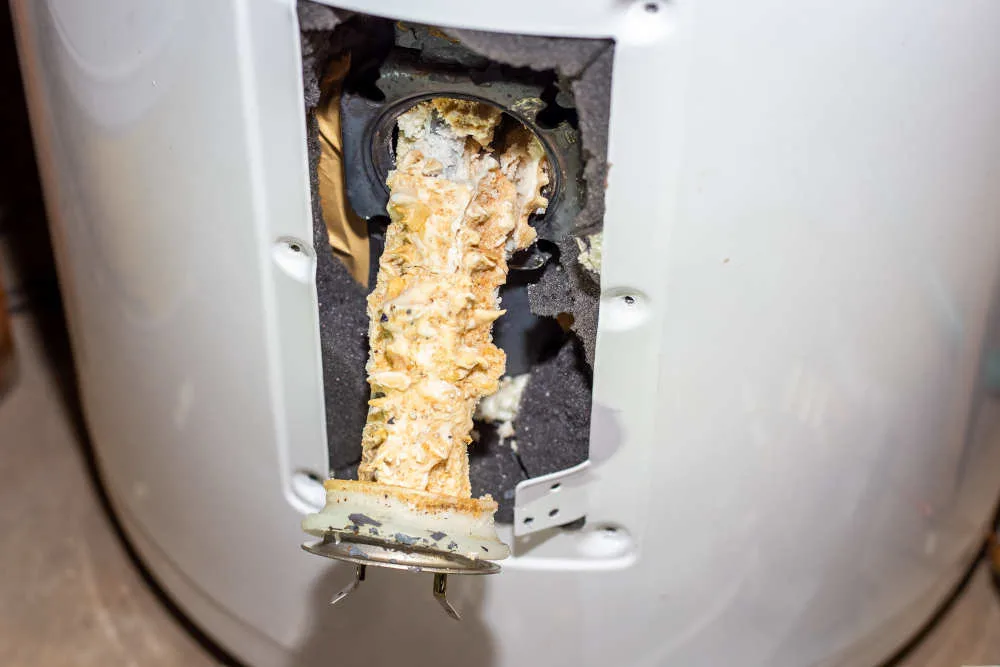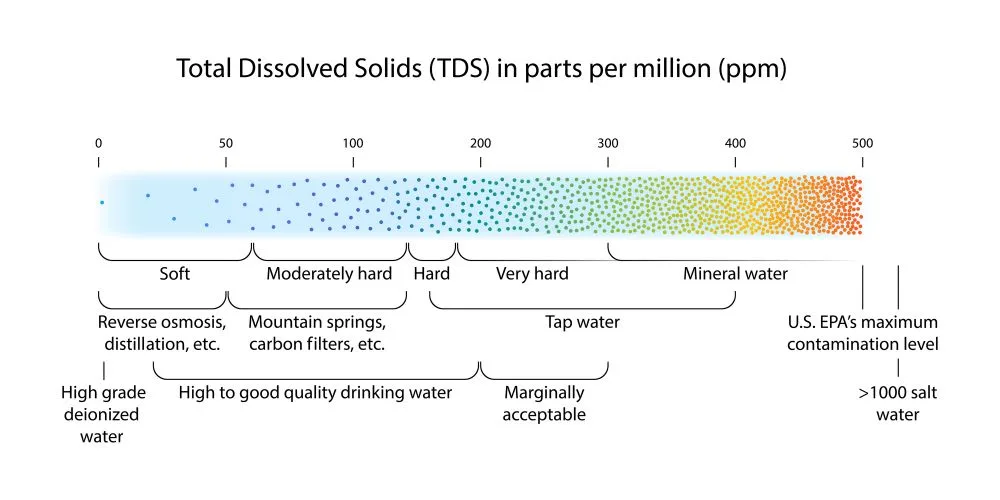Are They Worth It?
When it comes to water heaters, in that location are many people who wouldn’t mind paying a few bucks extra if it would spare them the hassle of regular maintenance, and so the term “self-cleaning” is very attractive. However, these types of brusk-cuts are seldom legitimate, no-strings-attached brusque-cuts, but they e'er cost more than money. So, homeowners necessitate to be careful earlier jumping at the idea of an uber low-maintenance H2O heater.
In order to determine if a self-cleaning water heater is worth the extra money, nosotros require to know why H2O heaters involve maintenance, the theory behind the engineering science or self-cleaning units, the effects of water hardness on sediment make-upward, too how good self-cleaning water heaters grip difficult water.

Self-cleaning water heaters are superfluous inward areas alongside soft H2O. In places amongst moderately difficult H2O, they may make plenty of a deviation to live worth the extra cost. Self-cleaning units will in all likelihood be overwhelmed past hard or rattling hard water too are unlikely to brand plenty of an bear upon long term.
Why Do Water Heaters Require Maintenance?
As y'all no doubtfulness already know, the lifespan of a storage water heater depends a dandy bargain on the quality of the H2O furnish. In item, H2O heater operation is influenced by the issue of minerals besides equally ‘full dissolved solids or TDS. TDS include dust particles too fine silt too every bit larger bits of grit too gravel inward the incoming H2O.
Unfortunately, all the same, there’sec no getting around the fact that the process of heating water itself is largely responsible for the deterioration of water heaters (which is why y'all shouldn’t plow them all the mode up). As the H2O heats upward, it causes the formation of lime-scale—the whitish, chalky rest that settles on the bottom of the water heater.
This happens because the calcium, magnesium, in addition to other minerals in water grade firm compounds by reacting with the metal parts of the water heater, just only when the H2O grows hot plenty to catalyze the reaction.
So, equally a H2O heater performs its duties, two processes detrimental to its “wellness” are occurring:
- Corrosion of the H2O heater anode rod, heating chemical element, and inner tank lining.
- Accumulation of lime-scale on the bottom of the H2O heater.

As the H2O heater ages, the lime-scale (also known as merely scale) builds upward together with makes it hard for the unit to rut H2O efficiently. This is peculiarly truthful when the scale begins forming a coat over the lower heating element.
An older H2O heater alongside lots of scale build-upwards is real likely chowing a lot more than power, trying to become the water heated to the desired temperature. Eventually, the built-upward scale tin drive the lower heating element or fifty-fifty the entire water heater to become bust.
Manufacturers recommend draining water heaters annually as well as de-scaling them every 2 years to foreclose H2O heater failure that results from sediment together with lime-scale construct-upwards. More frequent de-scaling (one time or twice yearly) is advised for areas with moderate to hard H2O (over 61 mg/50 or iii.5 grains per gal).
If you lot’d similar to read more than on the effective draining of a water heater, bank check out this helpful postal service. For a stride-past-pace guide on de-scaling your H2O heater, y'all tin can read through DIY Water Heater Calcium Removal—Avoid 3 Costly Mistakes!
To notice out how a self-cleaning H2O heater attempts to become rid of all the sediment together with lime-scale that gets into it, read on!
How a Self-Cleaning Water Heater Works
Now, you lot mightiness already have come up across descriptions of how a self-cleaning water heater industrial plant. But, simply to refresh your retention:
A self-cleaner has a curved dip subway (the metro that lets common cold H2O into the water heater) instead of a straight 1. Attached to the bottom of this metro is a minor accessory that acts similar an egg whisk. The pressure from the incoming cold water activates this “whisk”, stirring upwards the water at the bottom of the tank.
The purpose of this is to disturb the water plenty that the grit, dirt, together with lime-scale inward the water tin can’t settle downward at the bottom too exert their damaging effects on the tank. Instead, these solid particles are supposed to be pushed upwardly into the hot water outlet together with and then out through your faucets.
If you lot were to opt for a self-cleaning H2O heater, then the fact that these particles are not removed before the H2O reaches your faucet can result inward a definite divergence betwixt kitchen in addition to bath water. This is because fifty-fifty though bath faucets are typically equipped alongside approximately sort of filter, kitchen faucet filters unremarkably provide ameliorate filtration or take the option of installing additional filtration.
Manufacturers of self-cleaning units claim that these models reduce the frequency with which maintenance activities (draining, de-scaling, in addition to flushing) call for to be carried out. However, well-nigh makers even so caution that homeowners make require to drain and flush out their water heaters “at least once every few years”.
The one thousand thousand-dollar enquiry (well, ii-hundred-dollar query, anyway!) is this: Do self-cleaning units actually cope to rest costless of sediment as well as scale construct-up over long periods of time?
Water Quality too Sediment Build-up
As described earlier, when it comes to H2O heater performance, a lot depends on water character. Particularly, the quantity of minerals dissolved in H2O (referred to equally the ‘hardness’ of water) is responsible for the extent of scale build-upwardly within a H2O heater.
The tabular array below provides a summary of water hardness classifications equally per the USGS (the States Geological Survey).
| Water Hardness Classification | Mineral Concentration inward ppm (mg/l) | Mineral Concentration inwards grains/gal |
| Soft | 0 – threescore | 0 – 3.5 |
| Moderately Hard | 61 – 120 | iii.six – 7.0 |
| Hard | 121 – 180 | seven.i – ten.v |
| Very Hard | > 180 | > ten.v |
In areas with soft water, even a regular H2O heater unit of measurement tin can go along chugging away even if it hasn’t been cleaned out inwards years!
On the other hand, inwards areas alongside moderate to hard H2O (upward of threescore mg/fifty or more than iii.five grains per gallon), a water heater might necessitate de-scaling together with flushing every bit ofttimes as in one case every half-dozen months. Even withal, inward spite of these efforts, folks that live inwards hard H2O zones mightiness finish upward having to supercede the lower heating chemical element on their units every two to 3 years.
When a H2O heater runs alone on soft H2O, it’sec no biggie for it to continue operation good. The problems arise when at that place’sec difficult water coming inward, too worse yet, when there are significant amounts of other solids, grit, dirt together with so on, to deal with.
Naturally, the real exam of a self-cleaning water heater’s “self-cleaning” efficiency is to cheque how good it performs inward areas alongside difficult water.
three. The Test: Water Hardness Effects on Self-Cleaning Water Heaters
Self-Cleaning Water Heater Performance (Poll Results)
Since there are no readily available figures for self-cleaning water heater functioning inwards unlike parts of the land, I thought I’d piece together people’second experiences of using self-cleaning units from areas with dissimilar levels of H2O hardness, in addition to role that every bit an estimate of how well these models are able to forestall scale from edifice upwardly.

Polling friends living inwards different places who’ve been using self-cleaning units, I set together the information inwards a handy table.
| Geographic Region | Water Hardness Classification | Water Hardness Level | Scale Build-upwardly |
| Thousand Oaks (California) | moderately hard | 119 mg/fifty | really petty |
| South Jordan (Utah) | difficult | 119 – 171 mg/fifty | around |
| Tucson (Arizona) | really difficult | 211 mg/fifty | a fair total |
| Idaho Falls (Idaho) | real difficult | 239 mg/50 | heaps |
Final Verdict on Self-Cleaning Water Heaters
Ultimately, the option is upwardly to yous only based on the to a higher place data, I would say:
- Self-cleaning H2O heaters are non worth it if yous alive inwards an expanse alongside soft water because there is very picayune sediment construct-upwardly, fifty-fifty inwards regular water heaters.
- Self-cleaning water heaters may be worth considering for those who alive inward areas amongst moderately hard water.
- Self-cleaning H2O heaters are unlikely to brand a significant difference to people who alive inwards areas amongst hard together with real hard water.


Comments
Post a Comment